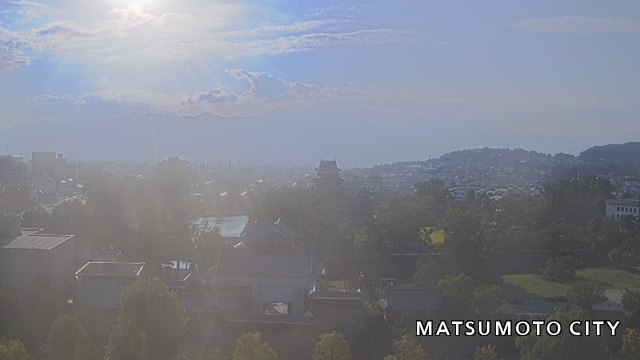Honmaru Goten ruins, Ninomaru Goten ruins
Honmaru Goten (Honmaru Palace/Main enclosure palace) ruins


Honmaru Palace was once located within the area partitioned using roof tiles in the Honmaru garden.
Figure below on the right is a restored layout of the Honmaru palace. It consists of 5 main buildings, a total of approximately 60 rooms, the floor area is approximately 2,730 square meters. A long fence is running around the perimeter of the palace and it divides the palace from the Keep in the west, and Uchibaba in the north, respectively. It is estimated that the palace had been built at the same time as the Keep. It was used as the domain's administration office and also a residence of the lord. In 1727, which was a leap year new year, it was burned down by a fire.
The lord then was Mitsuchika Toda, who was moved from Toba in 1726, just a year before the fire occurs. The palace was never rebuilt after the fire, and the place of administrative affairs was moved to the Ninomaru palace.
On the southern part of the palace, there were a stage, a large drawing room, a large saloon, rooms for viewing Nou performance, for discussion, rituals or meeting and entertaining guests, etc., while in the center of the palace, there are offices of high ranking vassals including a councilor room, steward room, councilor's study, etc. The northern part of the palace was used as a private area of the lord. There were a living room and bedroom for the lord, and rooms in which servants stand by. Also, in the northern part of the palace behind the lord's living space, there are rooms for cooks and store rooms. To the north and west of the entrance, there was a kitchen. It has been believed that in the northern part of the courtyard, there was a "Clock Room", in which a Japanese clock was placed to measure the time, then times were notified to the Drum Tower.
Ninomaru Goten (Palace) ruins


The Honmaru palace and Ninomaru palace are thought to have been built following the completion of the Keep which was completed around 1594. However the article in the "Kawabe document" dated 1633, the Ninomaru Palace was mentioned. Based on which, Matsudaira Naomasa who was a head of the Matsumoto domain between 1633 and 1638 may have been involved in the construction of the Ninomaru Palace.
The total area was approximately 6,270 square meters, the floor area is approximately 1,980 square meters, and there were approximately 50 rooms. Before the Honmaru Palace was burned down, the Ninomaru palace was functioning as a sub-Government Office. After the Honmaru Palace was burned down, all the functions of the Honmaru Palace were once transferred to the Ninomaru palace. However, because the Ninomaru was small in size, only about two thirds of the size of the Honmaru Palace, the county office and the town office was transferred to Rokku town, and the conference room for daimyo and village headmen was transferred to Agetsuchi town.
The formal entrance of the Ninomaru was located on the south center, consisting of a stand-by room and front doors. Also an inner entrance was located almost in the center on the east side. Entering the Ninomaru place through the stand-by room, there was a room on the left hand. Behind the room, there was a reading room and other rooms attached to it. The size was smaller than the Honmaru Palace, but the layout was same as that of the Honmaru Palace. In the Honmaru Palace, behind of which, offices for administrative affairs were placed, while in the Ninomaru Palace, there were private areas for the head of the domain here, and behind these areas, offices for administrations were placed. Administrative offices include rooms for high ranking officials including elders, stewards and secretaries thereof and other personnel.
The kitchen was spread to the northeast side of the Ninomaru palace, and there were a water well taking advantage of underground water, and a reservoir to keep water drown from the well in Jizou Shimizu district through a gutter.
In the Meiji Period, the Ninomaru Palace was used as Chikuma Prefectural Office, but a fire occurred at 3:30 AM on June 19, 1867 and the entire building was burned down. In 1979, a research excavation began and the Ninomaru Palace ruin were restored on the plane, and now they are open for public viewing.








